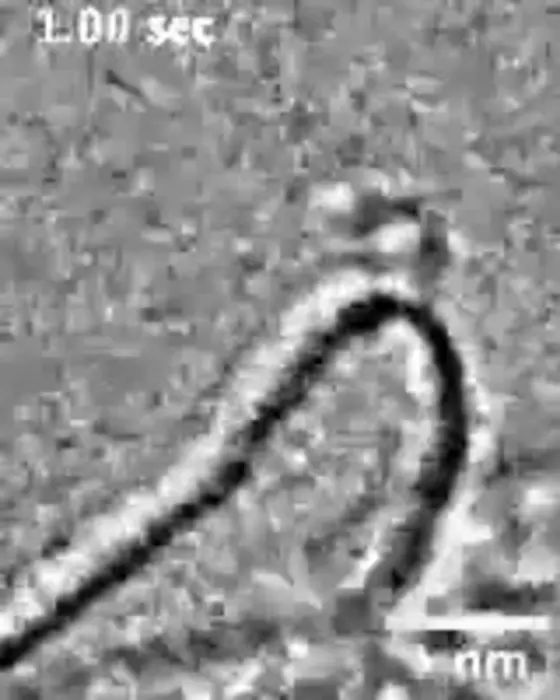
In a groundbreaking study, researchers from Northwestern University have made a significant leap in our understanding of catalysis by capturing the intricate movements of single atoms during a chemical reaction at an unprecedented atomic level. This remarkable achievement stems from the application of single-molecule atomic-resolution time-resolved electron microscopy (SMART-EM), a cutting-edge technology that enables scientists to visualize individual molecules as they react in real-time. Through this innovative approach, scientists have unveiled the shadowy world of fleeting intermediates in chemical reactions, revealing details about pathways that were previously hidden from view.
Catalysts play a crucial role in modern chemistry, helping streamline chemical reactions that are essential in producing a wide range of products, from fuels and fertilizers to pharmaceuticals and plastics. For years, scientists have sought to observe catalytic events at an atomic level, driven by the desire to comprehend how these often-complex reactions occur. The ability to visualize catalytic processes in real-time could lead to the design of more efficient and sustainable chemical processes—a vital component in addressing pressing environmental challenges.
The focus of this study was a seemingly simple chemical reaction: the removal of hydrogen atoms from an alcohol molecule. At the heart of this research was a meticulously designed catalyst—constructed from molybdenum oxide particles anchored to a carbon nanotube. This single-site heterogeneous catalyst was devised to eliminate the chaotic elements that commonly plague traditional heterogeneous catalysts, which typically have multiple active sites contributing to a complex and unclear reaction pathway. By creating a single active site, the researchers could closely monitor how the catalyst interacted with reactants.
The implications of capturing these reaction events in real-time are profound. Traditional microscopy methods often fail when applied to sensitive organic compounds, as their high-energy electron beams can damage the very structures scientists wish to study. However, SMART-EM operates at lower energies, allowing researchers to navigate the fine line between obtaining useful data and preserving the integrity of delicate molecules. This methodology transcends the limitations of conventional techniques, paving the way for a clearer understanding of how catalysts manipulate molecular transformations.
One of the most startling revelations from this research was the discovery of new reaction pathways. While scientists previously believed that the reaction produced hydrogen gas and aldehyde directly from alcohol, observation through SMART-EM revealed that the aldehyde does not escape as anticipated. Instead, it tends to adhere to the catalyst, forming short-chain polymers. This unexpected intermediate not only showcases the complexity of catalytic dynamics but is also a clear demonstration of how vital it is to observe molecular transformations in real-time rather than relying on theoretical models.
The ability to capture rapid sequences of images and generate videos of these chemical transformations has led to what Nakamura described as “cinematic chemistry.” This technique not only allows for the observation of catalysts in action but also opens the door to quantifying catalytic efficiency and understanding reaction kinetics in ways that have previously been unachievable. This new form of chemical analysis not only enriches our fundamental understanding of catalytic science but also provides an experimental foundation upon which future innovations could be built.
Moreover, the interdisciplinary collaboration among researchers, including contributions from esteemed institutions and experts both from Northwestern University and the University of Tokyo, highlights the collective effort to push the boundaries of traditional chemical research. The cross-pollination of ideas and methodologies reflects a paradigm shift in how scientists approach chemical studies, particularly in understanding the mechanisms underlying catalysis at an atomic level.
The success of this study is significant not only for advancing fundamental knowledge in chemistry but also for its practical applications. With the ongoing challenges posed by energy sustainability and climate change, the insights gleaned from observing catalytic reactions could contribute to the development of greener, more efficient chemical processes. For example, understanding the intricacies of hydrogen production from renewable sources of ethanol could revolutionize how we think about alternative fuels, thereby supporting shifts towards a more sustainable energy landscape.
Researchers have noted that the findings could influence numerous fields beyond chemistry, potentially impacting industries such as pharmaceuticals, agriculture, and materials science. The widespread applicability of this research exemplifies the interconnectedness of scientific disciplines and emphasizes the importance of curiosity-driven research in addressing global challenges.
As this study gains recognition and scrutiny, it is poised to serve as a catalyst—not just in the chemical sense—but as a source of inspiration for further research and exploration. The research acts as a reminder of the power of innovation, showcasing how sophisticated technology can unveil the hidden mechanics of nature and contribute to our overarching goal of sustainability.
The newly unveiled mechanisms of chemical transformations will undoubtedly serve as an impetus for further studies. As researchers pursue the isolation of fleeting intermediates and investigate the nuances of catalytic processes, the findings of this research will likely lead to new theoretical models, simulations, and innovations in chemical engineering. This is merely the beginning, as the scientific community anticipates rapid advancements that could arise from applying SMART-EM and similar techniques to other complex chemical systems.
In conclusion, the ability to visualize chemical reactions at the atomic level represents a milestone in the quest for deeper understanding of the underlying mechanisms governing catalysis. As the scientific community continues to explore the implications of these findings, the potential for innovation in catalysis and its application to sustainable development could prove to be transformative, marking the dawn of a new era in chemical research.
Subject of Research: Direct observation of catalysis at the atomic level
Article Title: Atomic-resolution imaging as a mechanistic tool for studying single-site heterogeneous catalysis
News Publication Date: April 11, 2025
Web References: N/A
References: N/A
Image Credits: Northwestern University
Keywords
Tags: advancements in catalysis scienceatomic-level catalysisenvironmental challenges in chemistryfleeting intermediates in chemistryhydrogen atom removal reactioninnovative catalysis technologylive catalytic eventsNorthwestern University researchreal-time chemical reactionssingle-molecule electron microscopysustainable chemical processesvisualization of chemical pathways





